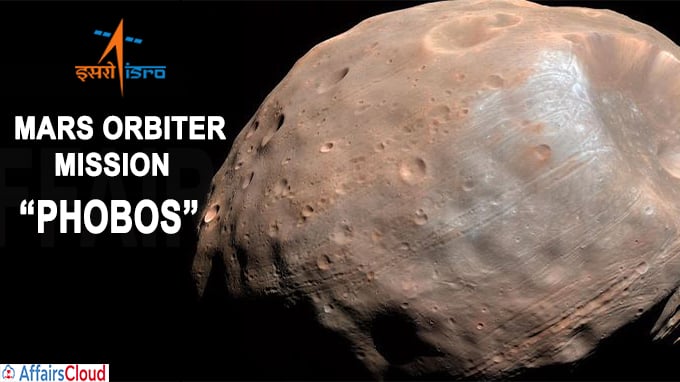
- The image was a composite image generated from 6 MCC frames and had been colour corrected.
- The spatial resolution of the image is 210 m. Stickney, the largest crater on Phobos, along with the other craters (Shklovsky, Roche & Grildrig) were also visible in the image.
- Phobos is believed to be made up of carbonaceous chondrites.
About MOM:
The Rs 450 crore mission, also known as Mangalyaan , was launched with the PSLV-C25 rocket from Satish Dhawan Space Centre in Sriharikota, Andhra Praesh (AP) on November 5, 2013. After crossing more than 66 crore kilometres in 300 days it entered into Mars orbit on September 24, 2014, in its very first attempt.
- The MOM mission aims at studying the Martian surface and mineral composition as well as scan its atmosphere for methane (an indicator of life on Mars).
- The Mars Orbiter has five scientific instruments – Lyman Alpha Photometer (LAP), Methane Sensor for Mars (MSM), Mars Exospheric Neutral Composition Analyser (MENCA), Mars Colour Camera (MCC) and Thermal Infrared Imaging Spectrometer (TIS).
About Indian Space Research Organisation (ISRO):
Chairman– Kailasavadivoo Sivan
Headquarters– Bengaluru